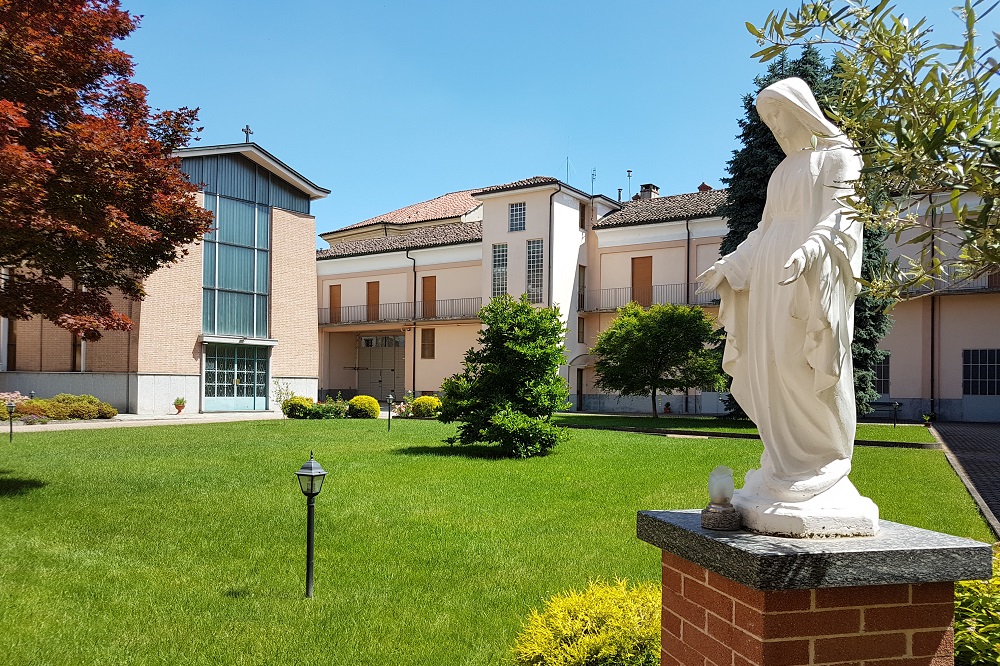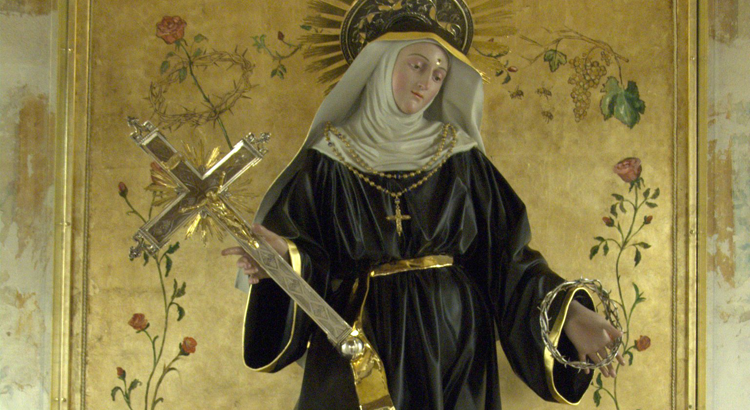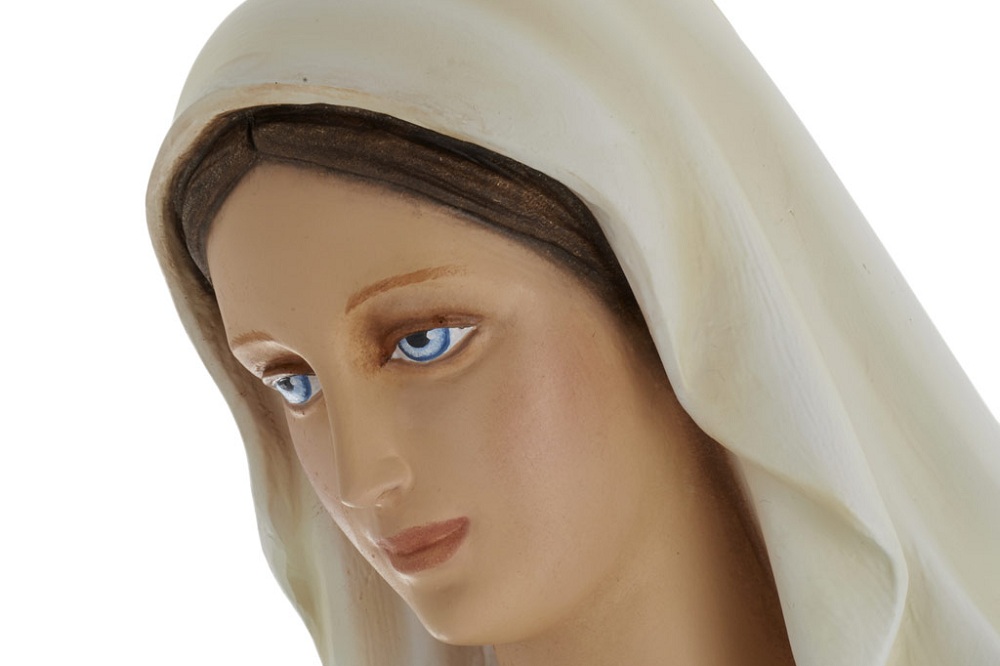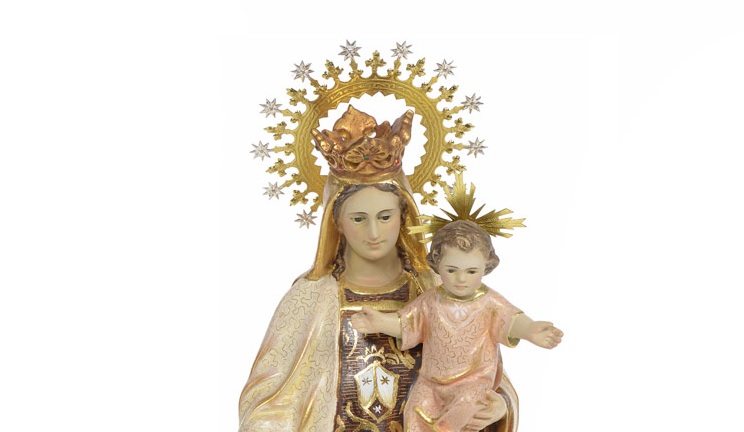Garden statues, an ancient but yet current tradition. Enrich your garden with garden statues depicting sacred subjects, made of resin, wood, stone and marble
Decorate your garden with outside statues. How to choose the most appropriate garden statues for your taste and inclination.
An old-fashioned trend? No, definitely not.
The taste for exterior design is extremely current, carried out by the best and most famous architects, defined by precise standards and constantly evolving. The trend of decorating gardens and outside spaces, even with statues, dates back to the birth of the garden as extension of the house itself, or, in some civilizations, of the temple. In both cases, beyond the practical use of exterior and green areas, in particular the cultivation of plants, vegetables and fruit, the garden has always been intended as a place that could convey peace and pleasure to those living it.
The first proof of an ornamental garden dates back to 3000 B.C. in the Sumer culture, but also Egyptians had already been practicing gardening activities by then, and in 1500 B.C., they used to depict marvelous gardens adorning palaces and temples of their towns in their wall paintings. Exactly from Egypt, and in particular from the famous Tolomeo’s gardens in Alexandria, the Romans imported their taste for decoration of gardens and porches of their villas. Roman gardens embellished patrician homes and were places of peace and tranquility, connected to the inside of the house by porches decorated with friezes and statues. Besides Egyptian gardening techniques, Roman gardens took inspiration mostly from Persians, and most of all from Greek gardens; they took the sacred and symbolical dimension from them. In fact, Greek gardens were considered as an appendix of the temple, a place where they enjoyed spending time. Not so much a leisure place then, but a miniature sacred wood where ministers grew plants and bushes that were so dear to the deity. Greek gardens were built according to a specific geometry, had fences dedicated to sports activities, and were guarded by the shadow of the trees. They even hosted tubs to collect rainwater and fruit trees, palms and grapevines. Even in Roman gardens fruit trees were preferred, or big trees such as plane trees, cypresses, oaks, holm oaks and green and evergreen bushes and plants, such as laurel, box, myrtle, acanthus, periwinkle and maidenhair. Another feature of Roman gardens was that they were embellished with garden fountains and statues depicting sacred subjects, but also chosen for essentially ornamental reasons. It was very popular to place statues of the Lares agrestes in the garden, the gods connected to farm life, but also statues depicting fauns, nymphs or Priapus, god protector of vegetable gardens. If we can recall Lares statues to the current trend of garden gnomes to some extent, it is interesting to consider that we owe the origin of the nativity scene exactly to them. In fact, during the winter solstice, Roman children were invited to place the Lares statues inside a hedge. The Italian word ‘presepio’ (nativity scene) is said to come right from ‘prae-saepere’, meaning surround with a hedge. In the centuries that followed the fall of the Roman Empire and the barbaric invasions, most of the Roman villas were torn down and the materials retrieved were used again for construction building. For what concerns garden statues and precious marbles, they will end up decorating the gardens and palaces of noble families and the highest exponents of the Roman clergy
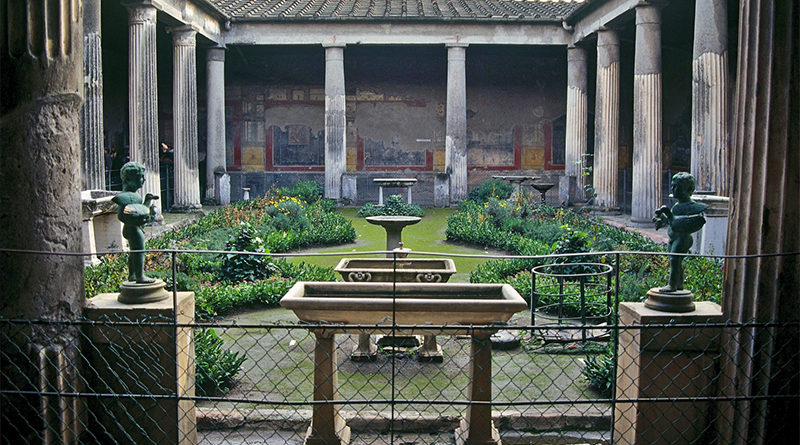
During medieval age, Roman gardens were devastated and erased by barbaric invasions. They were replaced by hortus conclusus, that is, fenced garden, often appearing next to monasteries and convents. Here monks grew herbs, vegetables and fruit trees, aimed to sustenance. The fall of the Roman Empire and the loss of a big part of the cultural and architectural traditions led to start over, thanks also to a taste for decorating gardens. Soon the rediscovery of the garden moved from a religious to a lay context. Slowly even gardening techniques became popular, and even the care for fruit trees, especially citrus fruits; they came from Arabs, who in turn had taken that from Babylonians and Egyptians. To some extent, it is in this very context that the term ‘garden’ was born, from Indo-Germanic gart or hart that means ring, surround. Arab gardens were not adorned with statues, but they were rich in flowers, herbs, fountains, water games and animals, conveying a sense of harmony meant to please all senses and give a taste of Paradise.
During the Renaissance, a new concept of garden grew in Italy, the so-called Italian garden, or formal garden. It recalled the geometry subdivision of spaces of the Greek gardens, but added amazing architecture and technique. In the Italian garden, architectural elements such as fountains and statues merged with hedges and tree-lined paths, plant sculptures, water pools; they were arranged in an apparently harmonic and natural order, but that order was actually based on very strict rules and was the result of deep studies.
Even the French garden comes largely from the Italian garden, with an additional taste for symmetry and its pretension to bend nature according to formal perfection. Even in this case, a large space was dedicated to ornamental statues. The English garden, or informal garden, is completely different. Developed during the 18th century, it refuses geometric elements, while it joined natural and artificial elements, which combined, give life to wild landscapes. In the English gardens elements such as caves, streams, bushes, pagodas, pergolas, small temples and ruins are preferred instead of classic statues. A curious and charming aspect of English gardens is an unexpected evolution of the Roman Lares agrestes, the so-called ‘ornamental hermits’; they were men paid to live inside caves and caverns inside the noble owner’s garden, living indeed as hermits, and represented a curiosity to show and look at with guests.
More recently, and still today, new design waves were born next to the revival of historical gardens, addressed especially to gardens and green areas. Some elements are still present, and among them, garden statues are surely the ones with the most ancient and charming history. Even if today classic statues depicting athletes, deities, nymphs and fauns still keep their appeal, also statues depicting saints, or in general sacred statues, are very popular as well. Once again, the garden becomes a place dear to divinities, a cozy and pleasant place where it is easier to talk to our inner side, pray or meditate.
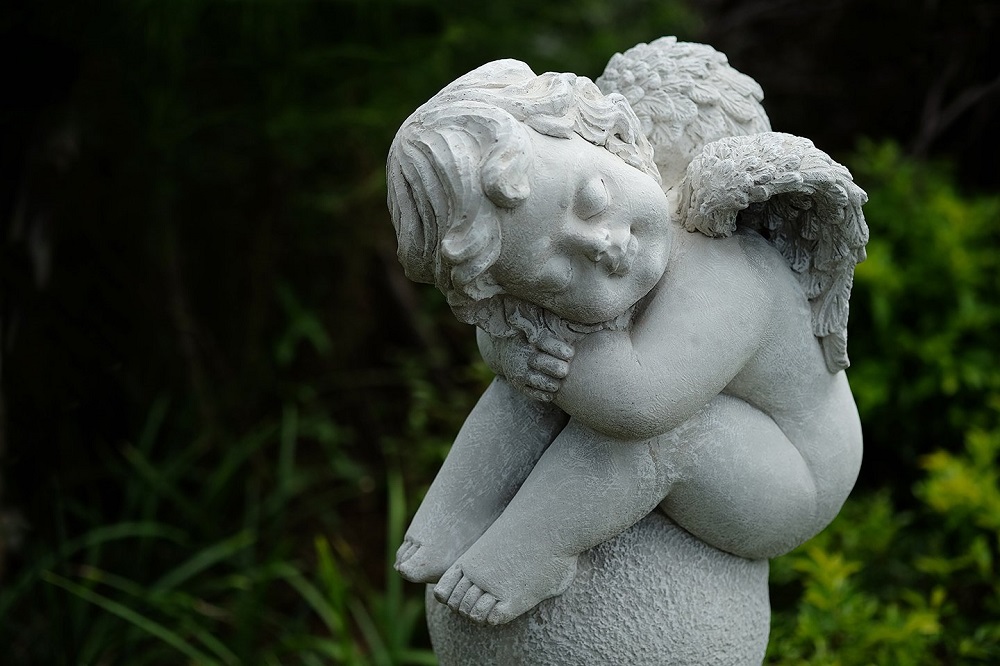
Features of garden statues
Let’s see how we can choose our outside religious statues. There are of any kind and size, suitable for any solution and style: from the outside Mary statue to garden angels statues, or even affordable garden amphora, and they can be made of stone or resin. There are statues about 10 cm tall that can decorate a green corner or a small votive cave, and very big statues up to 2 meters tall depicting the Helper Virgin or the Immaculate Virgin, or even Jesus Redemptor or the Christ resurrected. The statues depicting Our Lady of Fatima, Our Lady of Lourdes, or even Our Lady of Medjugorje are very appreciated and popular. An outside ambient is also suitable for saints’ subjects, such as Padre Pio or Saint Francis, Saint Joseph or Pope John Paul II, but there is a wide variety of images to choose from, whether big or small. Setting up a corner in our garden that can host a garden statue depicting a scared subject we particularly love can be a very comforting and enriching experience.
The materials of outside religious statues
Obviously, when we choose garden sculptures we need to take into account that they will be constantly exposed to bad weather, to sunlight, to pollution, and to all of those agents that are not inside a house. On the long run, these factors can ruin statues that are not made with appropriate materials. To create outside sculptures, materials such as marble and stone were once used, and these materials are used still today, but also concrete, marble powder and wood. Materials that are more modern are common nowadays, such as fiberglass, which is particularly light and suitable for some contexts.

Holyart offers a very wide catalog of outside religious statues and sells garden statues online. In particular, the fiberglass statues are all hand-painted with oil paints, finely worked and cared in each detail. Both the molding and the finishing is carried out in Italy in a firm that boasts a long experience in the realization of sacred furniture. Since they are light, garden statues made of resin can be transported easily and can be placed outside, even if it is not recommended to keep them outside for a long time as they might lose brightness, unless they are protected with a special transparent paint. Resin garden statues are affordable, beautiful and suitable for any context.
Holyart also offers a wide variety of wooden statues representing Jesus, Mary and many Saints. Holyart wooden statues are very detailed, are available in any size and are made following different styles. Holyart wooden statues are made of olive wood coming from the Holy Land, Italian olive trees and other precious types of wood.
Moreover, Holyart catalog offers stone statues, handmade by the Atelier d’Art of Bethléem (France). They are statues made of Pyrenees stone, sometimes have resin inserts, and are an example of the French high quality monastic craft.
Particularly suited for outside areas and gardens are Holyart Carrara marble statues. They are perfect both for home gardens and cemeteries, since they are made of synthetic marble (or reconstituted marble), and rigorously handmade. They can be left natural, white or hand-painted. All Holyart marble powder statues are made in Italy with a 100% warranty of a Made in Italy product. Carrara marble powder is particularly indicated for funerary articles: ashes urns, applications and plaques for cemetery and flower vases.

